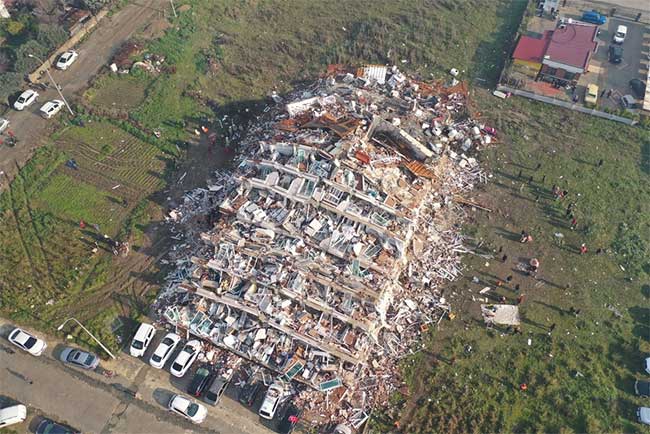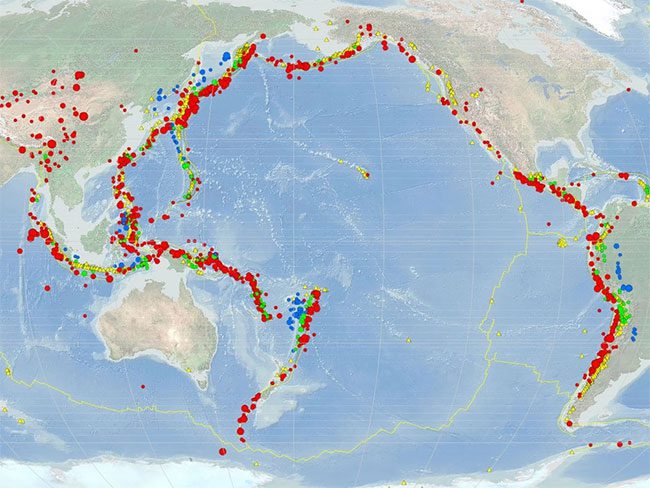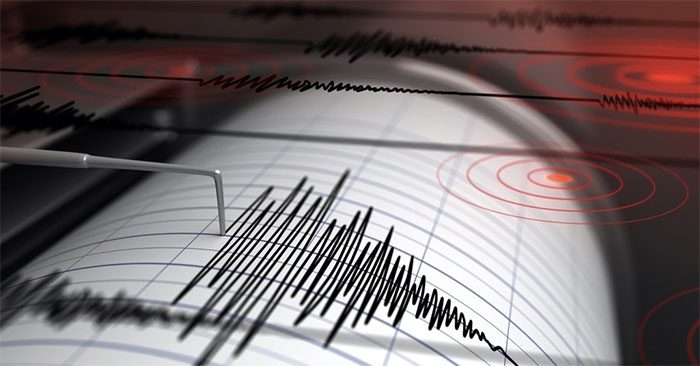Unlike weather forecasts, earthquake prediction tools have yet to achieve high accuracy and can only detect seismic activity seconds to a minute in advance.
The 7.8 magnitude earthquake in Turkey on February 6 shocked the world, with the death toll potentially exceeding 20,000 according to the World Health Organization (WHO).
This catastrophic event has raised a significant question: Why was no one able to predict this earthquake?
In reality, earthquake prediction technology has been studied by scientists for many years, but the results have been largely disappointing.
A Distant Future
Geologists believe that it is nearly impossible to predict an earthquake in advance since current technology struggles to analyze the complex movements of tectonic plates.
However, many other experts suggest that new technologies, such as artificial intelligence, will aid in predicting earthquakes more accurately and earlier, while smartphones can help alert people to quickly find shelter, significantly reducing casualties.
Yet, according to the Washington Post, no matter how hard they try, they can only predict earthquakes a few seconds or, in rare cases, a few minutes in advance. The ability of technology to accurately predict the location, timing, and severity of earthquakes remains a distant prospect, and inaccurate predictions can cause more harm than good.
“Earthquakes occur very quickly. At this point, we still cannot predict them,” said Christine Goulet, director of the U.S. Geological Survey. Tectonic activities often occur unexpectedly, causing devastating earthquakes without prior warning. Most seismic events, like the catastrophic 7-magnitude earthquake in Haiti in 2010, occur very suddenly.

Earthquakes occur very suddenly and leave devastating consequences. (Photo: Reuters).
Therefore, to avoid erroneous assumptions, geologists are beginning to focus on the probability of disasters occurring rather than predicting individual seismic events. Specifically, they use geological survey methods, seismic data, and historical records to identify regions at risk of earthquakes, then apply computational models to calculate probabilities.
However, unlike weather forecasting programs that have continuously improved due to computing power, modeling, and the proliferation of drones and artificial satellites, the quality of earthquake prediction tools has not achieved high accuracy even after many years of development.
Failed Predictions Erode Trust
According to the Washington Post, for many years, scientists have attempted to predict earthquakes using various methods but have rarely succeeded.
During the 1970s and 1980s, many researchers believed that various signs in nature could predict future seismic events, such as animal behavior, the release of radioactive gases, or changes in magnetic fields.
At that time, surveys of these signs indicated some commonalities but lacked the reliability necessary for scientific proof, said Professor John Rundle from the University of California.

Map recording earthquakes over 7 magnitude from 1900 to 2013. (Photo: USGS).
By the 1980s, many scientists predicted that the San Andreas Fault in California would cause an earthquake in 1993, but this did not occur until 2004.
“This marked the end of the field of earthquake prediction and demonstrated that scientists should focus on statistical models and risk assessments instead of guessing like weather predictions,” said Professor Rundle.
Today, as technology advances, early earthquake warning systems are also being developed. These networks include seismometers that identify and analyze minor earthquakes, connecting to a system that alerts the public seconds before a significant seismic event occurs.
For example, the ShakeAlert system developed by the U.S. Geological Survey sends alerts to people’s phones, providing them with 20 seconds to 1 minute of advance notice before an earthquake strikes. This system uses data from field sensors that measure the intensity of seismic activity. When these sensors detect ground shaking, computers analyze the data and predict the earthquake’s location within 5 seconds.
Subsequently, telecom networks send notifications to users in the affected area. According to the Washington Post, this technology operates thanks to the internet and mobile signals that can transmit at the speed of light, faster than seismic waves travel through rock layers.
AI Also Makes Mistakes in Earthquake Predictions
However, experts indicate that increasing the prediction time by seconds is a challenging task. Accurate earthquake prediction will require a massive simulation with extensive analyses of the Earth’s crust’s oscillations and marking all suspected points for thorough examination to determine where tectonic activity will occur.
Moreover, many random factors come into play during an earthquake. Despite the promise of modern technology, scientists remain concerned that these devices may hastily predict outcomes, eroding public trust.

Analyzing and predicting earthquakes requires a vast data repository documenting every second and minute. (Photo: Shutterstock).
Consequently, many researchers have turned to apply artificial intelligence, utilizing enormous datasets and sample trials in the hope of analyzing more information than humans can and identifying accurate earthquake precursors.
Specifically, some scientists are developing a “nowcasting model,” utilizing machine learning technology with large datasets from seismological materials to radar information. These data relate to how tectonic plates form, helping to predict the timing and location of earthquakes more accurately.
However, this technology has yet to achieve perfect accuracy. Estimates suggest that they can only predict earthquake locations within a maximum radius of 960 km, and this still lies in the distant future. More specific information cannot be predicted due to the limited data on previous earthquakes.


















































